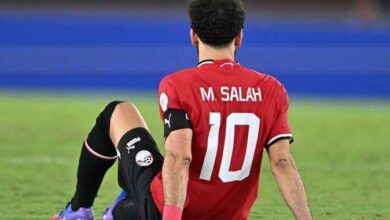
(CNN) – Leading sports stars are having their mental well-being and performance impacted by “horrific online abuse” and are receiving a “torrent” of hateful messages for showing solidarity with social causes, according to a new study released on Tuesday.
For a number of years, social media companies have been implementing new safeguarding protocols in an attempt to prevent the online abuse of sports stars.
But this report — conducted jointly by FIFPro, the worldwide footballers’ union, and the NBPA and WNBPA, the unions representing players in the NBA an WNBA — would suggest these organizations still have a lot of work to do.
The study covered the period from May to September 2021 and followed the mentions of around 80 footballers playing in Europe and South America and 80 basketball players across the NBA and WNBA, with these athletes totaling 200 million followers.
The report revealed that players are receiving hundreds of “abusive” comments, including racist posts and “threatening or violent language.”
“Players across sports share similar risk profiles and suffer horrific online abuse in the workplace impacting mental well-being, lifestyle and performance,” reported the study as one of its findings.
Using technology called the ‘Threat Matrix,’ data science company Signify Group was able to track more than 7.3 million tweets that were directed at footballers and basketball players using the ‘@’ function.
Initially used to search for death threats and dangerous behavior, the ‘Threat Matrix’ had its library expanded over the past 18 months to include “hundreds of discriminatory and abusive terms encompassing racism, homophobia and misogyny,” as well as emojis.
Any tweets that are flagged by the technology as offensive, threatening or abusive are then individually reviewed by analysts to ensure there are no errors.
In total, FIFPro say the study detected 1,558 abusive posts sent from 1,455 different accounts across the targeted football leagues, NBA and WNBA.
The breakdown includes 648 abusive tweets were directed towards players in the NBA, 427 towards footballers and 398 towards WNBA stars.
Sexist and homophobic abuse were the biggest categories of targeted abuse directed at WNBA players. Four in five instances of targeted abuse in the WNBA included sexually explicit or harassing messages, while sexism and homophobia accounted for the majority (90%) of targeted abuse detected in women’s football.
‘Not a safe place’
Abuse on social media isn’t a problem that is exclusive to Twitter. However, Twitter allows public access to its programming, while this kind of study would not have been possible on Instagram and Facebook.
“Social media lacks viable and worthwhile safeguards that protect athletes and despite the recent formulation of new regulatory proposals across the UK, EU and US, there is nothing to suggest that required safeguards will be put in place,” Dr William D. Parham, Director of the NBPA’s Mental Health and Wellness program, writes in the study.
Parham says the consequences that are “doubtlessly triggered by social media abuse” include addiction to social media, anxiety, depression, sadness, pitfalls associated with social comparisons, jealousy, feelings of inadequacy, social withdrawal and isolation, suicide and sleep disturbances.
“When viewed within contexts such as race, ethnicity, gender, sexual identity, notoriety, or ‘celebrity’ status, athletes may feel disinclined to admit feeling adversely impacted by social media abuse,” Parham adds.
“They may elect, alternatively, to act as if all is well with them. These self-protective strategies involving ‘camouflage’ and cover-up may place athletes at greater risk of falling through the cracks of care and sensitivities and not receiving the support and wise counsel that could help them better manage their responses to social media abuse.”
“We are committed to combating abuse motivated by hatred, prejudice or intolerance and as outlined in our Hateful Conduct Policy, we do not tolerate the abuse or harassment of people on the basis of race, ethnicity, gender, gender identity or sexual orientation,” a Twitter spokesperson told CNN in a statement.
“Today, more than 50% of violative content is surfaced by our automated systems, further reducing the burden on individuals to report abuse. While we have made recent strides in giving people greater control to manage their safety, we know there is still work to be done.”
According to Twitter, it hasn’t received the data of the accounts and tweets included in the report so it unable to comment on these specifically, though it welcomes third party reviews to help improve the user experience on its platform.
Speaking to CNN last year, Thierry Henry said social media was “not a safe place and it’s not a safe environment,” after the former French international earlier announced he would come off his accounts until social media companies did more to stop online abuse.
Describing the psychological toll abuse has on players, Paris Saint-Germain forward Kylian Mbappe told CNN the attacks he received in the wake of France’s exit from Euro 2020 “hurt” him and were “hard” to take.




